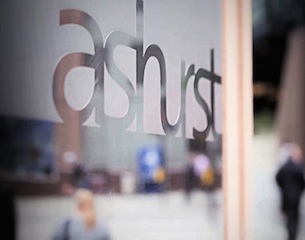EXCLUSIVE: Ashurst has launched an annual pensions e-newsletter, share news with employees about pensions-related issues in the workplace.

The publication is the first initiative to come out of the law firm’s internal pensions governance committee, which held its first meeting in October 2013.
The Pensions Monitoring Committee (PMC) is chaired by Ashurst’s pensions partner, Marcus Fink, with input from members of its HR, compensation and benefits, and finance teams.
Jean Slater-Romp, senior manager of compensation and benefits at Ashurst, said: “We established our internal PMC in 2013 and we are building on our pensions engagement strategy in 2014, to enable employees to make informed decisions about their pensions and future retirement needs while in the workplace.”
The first e-newsletter, which was sent out in April, detailed the work of the pensions committee, provided information about auto-enrolment and encouraged staff to review their pensions on a regular basis, particularly their choices around the default fund.
Slater-Romp added: “We are also taking some advice on establishing a core fund range to make fund selection easier.
“We will also continue with targeted information to specific groups, such as those impacted by the personal allowance changes.”
In May, the law firm replaced its paper-based total reward statements with an electronic statement, which was sent via email to all UK employees.
The statements received 601 unique hits on the day of launch. As a result of the online statements, there were 20 benefits changes, 12 new salary sacrifice arrangements, three changes to pension contributions and 86 holiday requests.
Ashurst’s auto-enrolment staging date was October 2013, but it postponed to January 2014. It used its existing group personal pension plan after making a few changes to its contribution structure.
Prior to auto-enrolment, the pension’s contribution structure comprised a maximum employer match of 7% for an employee contribution of 10.5%. For auto-enrolment, the law firm brought in a minimum contribution band of 1% employee and 1% employer.
Slater-Romp said: “We felt that, for those who had chosen not to join up until the point of auto-enrolment, it was probably [due to] affordability, so we decided to introduce the lower-level banding to meet auto-enrolment requirements. Employees can tier up if they want to at any time.”
The pension scheme currently has a take-up rate of 88%.
Ashurst has also run a series of communications to encourage employees to complete the nomination forms associated with the pension scheme. Slater-Romp said: “There is a temptation for employees to complete the nomination form for the death-in-service benefit, and they assume they have done the same thing for the pension.”
The pensions committee will meet again in October 2014, with plans to continue its work on the default fund, finalise a new retirement strategy and simplify its pension contribution structure.
Slater-Romp said: “We would be looking for agreement around those, so we can implement them in the new year.”